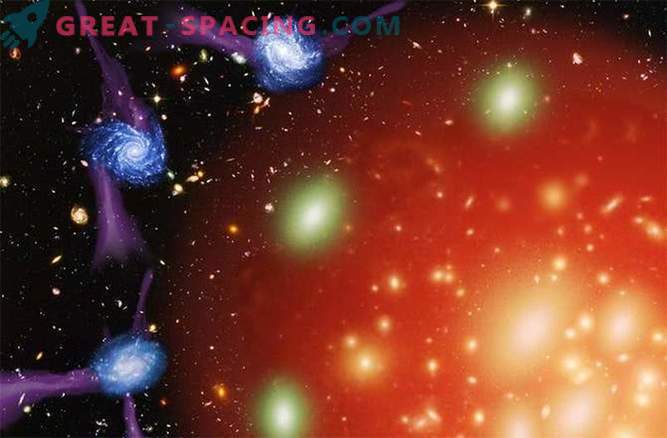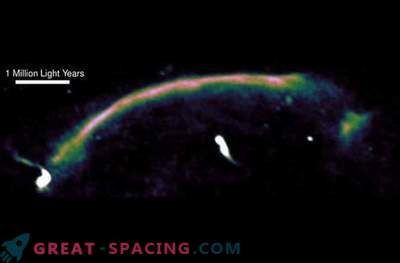
It is possible that scientists were able to solve the mystery about what exactly is destroying the galaxies in the Universe: they are strangled to death and can no longer create new stars.
For two decades, astronomers have been generally aware of the presence of two primary classes of galaxies. The first class is about half of the universe: living, gas-saturated galaxies that continuously form new stars. Only dead, gasless galaxies, where stars are not produced, are class two, said study author Jingji Penga, an astronomer at Cambridge University in England.
Up to this point, scientists were not convinced that provoked the suppression of star formation in galaxies. What kills galaxies? - This is one of the most difficult issues in recent decades.
Researchers have proposed two options for what could have caused the death of galaxies. One of the opinions is known as strangulation. The essence of this concept is that gradually in galaxies the huge amount of cold gas required for the formation of nov stars is exhausted. The second version is the unexpected elimination of gas from the galaxy. Maybe this is due to the gravity of another galaxy. Considering over 26,000 galaxies, scientists managed to find evidence that could cause the death of most galaxies - this is strangulation.
Jingji Peng said: "This is the first convincing evidence that the strangulation of galaxies leads to their death."
The stars are more composed of hydrogen and helium. Astronomers have focused their attention on the accumulation of "metals" in galaxies. This is the most complex component than helium and hydrogen. It was found that the dead galaxies have more heavy "metals" in contrast to the living. This discovery shows how galaxies can evolve over time due to strangulation.
After the amount of gas in the galaxy gradually decreases, it can still generate new stars. These stars will be formed from heavier elements, hydrogen and helium. In contrast, in galaxies from which gas is unexpectedly removed, stellar formation stops quite sharply, leading to fewer metals.
Thanks to computer models, astrophysicists have calculated that the asphyxiation lasts more than 4 billion years. This is consistent with the age differences seen between star forming and "dead" galaxies. According to the researchers, the theory of strangulation accounts for galaxies up to 100 billion times heavier than the Sun, which accounts for more than 95% of all galaxies. For large galaxies, all of the above evidence was not conclusive and validated.
Although astronomers, through research and observation, have learned the cause of the death of galaxies, they still want to understand the true mechanism that causes strangulation. The only option is that perhaps neighboring galaxies can help exhaust gas to form stars - astronomer Jingji Peng added.
With the help of a team investigation, relatively close galaxies were analyzed, and the next step would be to study more distant galaxies, which will provide a complete image of the young Universe. This further study will allow astrophysicists to establish a more accurate picture of how galaxies and stars are formed and developed.
Jingji Peng said that the team has all the necessary equipment to conduct observations.











































